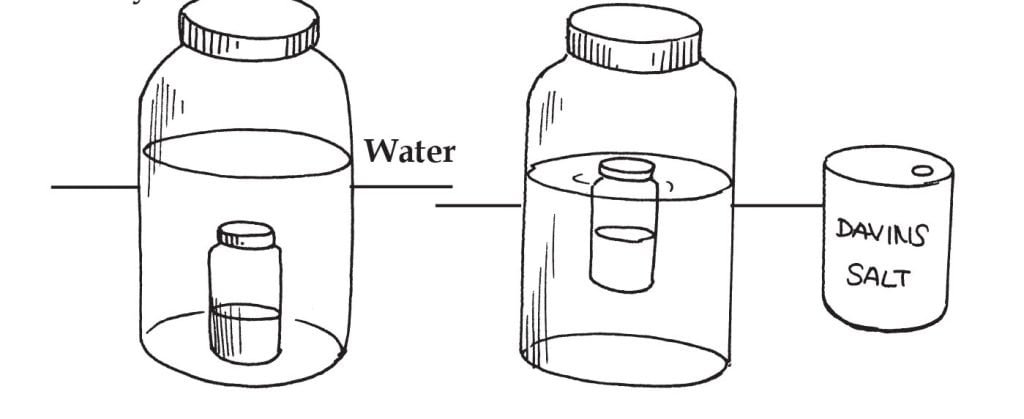
How salt affects buoyancy? In this experiment, we will try to understand this phenomenon.
Things Required:
Large-mouthed jar, 1 gal. (4 litre)
Small bottle with a lid table salt, 2 cups
Measuring cup, 1 cup (250 ml)
Large stirring spoon
Directions:
Fill the jar three-quarters full of water. Carefully place the closed small bottle in the water. It should float on the surface. If it does not, get a smaller bottle. Remove the small bottle and add a small amount of water. Close the lid and replace the bottle in the gallon jar of water. The bottle should slowly sink to
the bottom. Remove or add water to the small bottle until it sinks at a slow rate when placed in the water. Remove the bottle and add 1/2 cup of salt to the large jar of water. Stir. Replace the small bottle in the jar and observe its position in the water. Continue to add 1/2 cup of salt at a time until 2 cups have been added. Observe the position of the small bottle in the salty water after each measure of salt has been added.
This Is What Happens:
The bottle rises in the water as more salt is added.
Science Behind It:
Adding water to the small bottle makes it heavy enough to sink. The sinking bottle pushes water out of its way. The weight of the water pushed aside equals the amount of upward force on the bottle. This force is called the buoyancy force. A small amount of salt increases the buoyancy force, but it is not enough to overcome the downward force resulting from the weight of the bottle and water inside. The larger amount of salt increases the buoyancy force, allowing the bottle to float on the surface of the heavy salty water.

